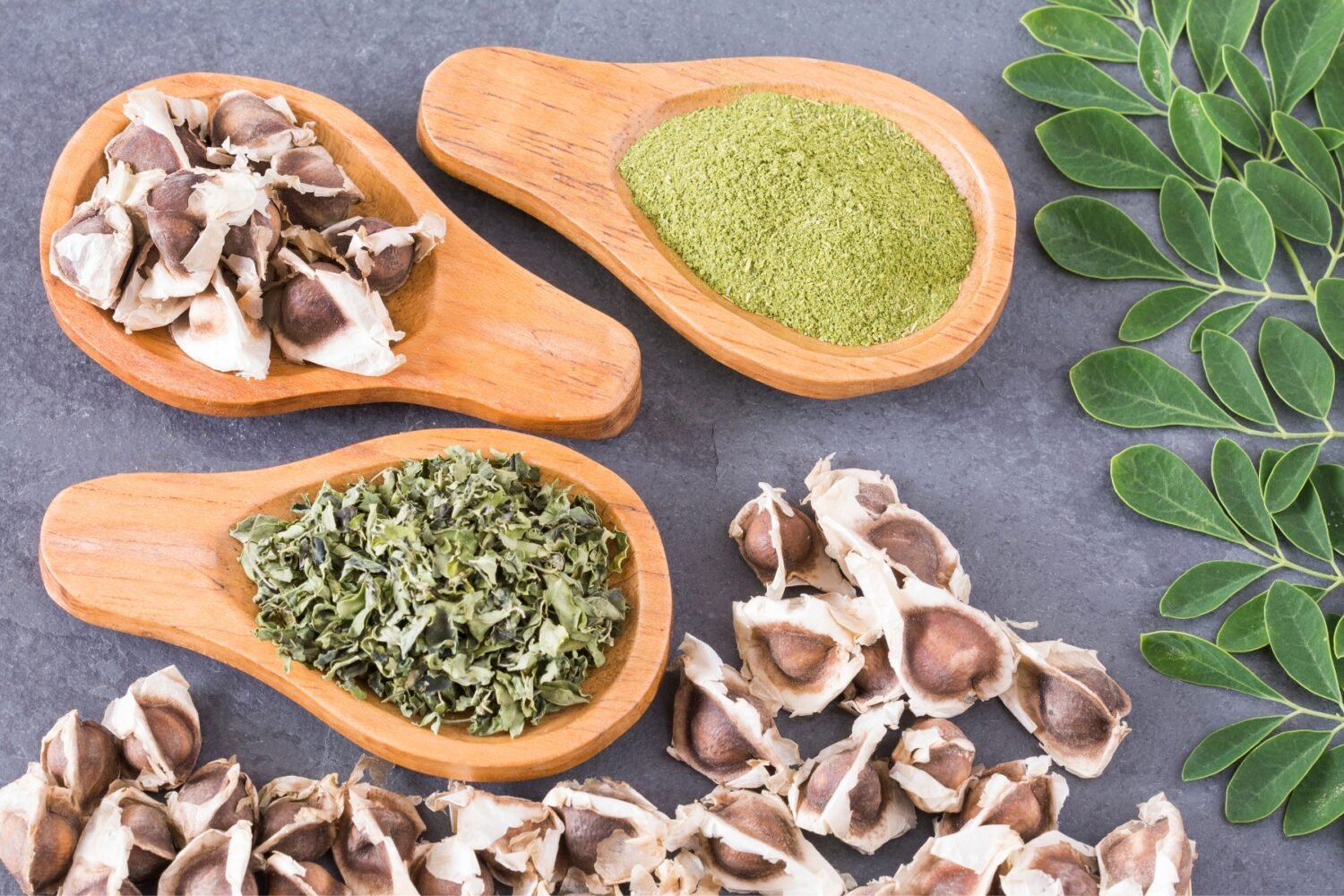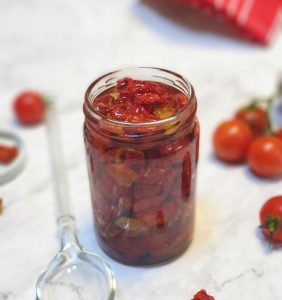Some of the links in this post may contain affiliate links for your convenience. As an Amazon associate I earn from qualifying purchases.
Have you ever heard about the Moringa plant? Moringa oleifera is a plant that has come into the public consciousness because of its high nutritive value. It has many culinary uses, is easy to grow, and can be used to purify water to boot! It goes by other names as well: some call it the “drumstick tree” and in the Philippines it is known as “malunggay.” I call it a wonder plant. This article explains why.
“This is for information purposes only and is not intended to diagnose, treat, or prescribe for any disease. Consult your personal medical professional.”
Can humans eat moringa?
Yes, humans, with appropriate cautions, can eat moringa. That’s only one use of it, though. I’ll be honest – at first I dismissed it as a fad. However, after some extensive research, it looks as though it is here to stay because of its genuine benefits.
Honestly, I haven’t been this fascinated by a plant since I heard about soapwort and vowed I would grow it in my garden and use it as shampoo. But that’s a subject for another day.
Basic nutrition facts about moringa
Moringa has joined the exclusive club of “super foods” that also counts among its members kale, quinoa, and acai berries, for some very good reasons. Moringa is extremely high in over 90 nutrients, including 8 essential amino acids that our bodies need but cannot produce, such as vitamins B, B1, B2, B3, D, and E. It also has:
- three times as much iron as spinach,
- four times the calcium of milk,
- four times the vitamin A of carrots,
- and is higher in vitamin C than oranges.
Boom!
As if all that weren’t enough, Moringa is also one of the highest naturally occurring sources of chlorophyll, the health benefits of which could be the subject of its own article. Because of this, many international NGOs are encouraging the use of moringa as a treatment for malnutrition. That ought to be enough to get any prepper’s attention.
With all these nutrients, one or more moringa plants would be a great asset to your garden, in addition to the foods in your food storage pantry.
Healing Properties
Moringa, often called the “miracle tree,” has lots of good things for your health. Here’s why:
- Packed with Vitamins and Minerals: We just mentioned this. There’s a bunch. It’s awesome.
- Potent Antioxidant Properties: Packed with antioxidants that combat harmful free radicals, bolstering your body’s defense against diseases.
- Supports Your Immune System: Moringa fortifies your body’s immune system, so you can fight off sickness better.
- Good for Your Skin: Moringa can help with skin problems like acne.
- Helps Digestion: Moringa aids digestion and decreases stomach upset.
Edible Uses
The leaves, flowers, seeds, and seed pods are all edible. The flowers must always be cooked, however slightly, before eating to neutralize certain toxic compounds found therein.
WebMD also recommends staying away from the roots and bark, as the same toxic compounds found in the flowers are present in the roots in much higher concentrations, and can cause paralysis and death. The threshold for such a dismal fate is not known, so to be on the safe side, don’t eat the roots or bark.
Seed pods
Young and tender seed pods, also referred to as “drumsticks,” can be cooked as green beans and have a flavor that is reported to be not unlike asparagus. Interesting fact: they call them “drumsticks” because they resemble the things you use to hit drums, not because they have anything to do with a certain favored part of a chicken. They kind of look like really long okra pods, to me.
Older trees produce seed pods that are tough and bitter in addition to tender ones; for this reason moringa trees are often grown as seasonal crops even in places where they can thrive year-round.
Leaves
The leaves can be found in many traditional South Asian dishes, whether they are dried and added as a garnish, or added to soup, omelets, or curry. As for the taste, one source said that the leaves tasted like a “pecany spinach” when cooked, and slightly pungent like radishes or watercress when raw. It has become popular in the Philippines to make a pesto dish from moringa leaves.
Seeds
Seeds can be roasted like nuts when mature or cooked like peas when young. Unless you are eating seeds grown yourself, use caution when ingesting seeds. Only eat seeds meant for human consumption, as seeds intended for cultivation are sometimes sprayed with insecticides.
Flowers
As for the flowers, they can be used to make tea, or can be battered and fried like squash blossoms. Just remember to cook them as mentioned above to neutralize toxins.
Cautions
While moringa offers numerous health benefits, it’s essential to exercise caution when using it, particularly in high doses or for extended periods. Here are some cautions and considerations to keep in mind:
- Potential Interactions: Moringa supplements may interact with certain medications or medical conditions. If you are taking prescription medications or have a specific medical condition, consult with a healthcare professional before using moringa to ensure it won’t interfere with your treatment. For example, combining moringa supplements with levothyroxine, a medication for hypothyroidism, should be approached with care due to the potential interference of moringa’s fiber and polyphenols with levothyroxine absorption.
- Pregnancy: WebMD recommends avoiding the flowers entirely doing pregnancy because they can act as an abortifacient.
- Allergies: Some individuals may be allergic to moringa. If you experience any signs of an allergic reaction, such as itching, swelling, or difficulty breathing, discontinue use immediately and seek medical attention.
- Digestive Issues: I know, we just said earlier that it can aid digestion, however, consuming large quantities, particularly the leaves, can lead to digestive discomfort, including diarrhea and stomach cramps. Start with a small amount and gradually increase your intake to assess your tolerance.
- Moderation: As with any dietary supplement, moderation is key. Excessive consumption of moringa, especially in supplement form, can lead to adverse effects.
It’s crucial to remember that individual reactions to moringa can vary, and what is safe and beneficial for one person may not be the same for another. If you’re considering incorporating moringa into your diet or using it as a supplement, it’s advisable to consult with a healthcare professional, especially if you have any underlying health conditions or are taking medications. They can provide personalized guidance based on your specific needs and circumstances.
Using Moringa Seeds To Purify Water
As a prepper, this is the thing about the moringa plant that most piques my curiosity. You can not only eat it, but you can purify water with it, too? It sounds almost too good to be true. In fact, I am pretty sure I once saw an episode of “I Dream Of Jeanie” that featured some kind of magic seeds that could be used for water purification. Unlike that ridiculous made-for-TV plotline, this looks pretty legit. According to this tutorial, two spoonfuls of dried, powdered moringa seeds can be used to purify as much as 20 liters of water.
Not only does this sound like a practical solution to the widespread problem of water accessibility in the third world, trying this out would be an extremely educational survival skill homeschooling activity!
The seed powder bonds with particulates in the water and make them sink to the bottom, so the purified water can be poured off through a simple cloth filter. This method also takes care of most (but, as a caution, not all) of any bacteria present in the water. It doesn’t take care of 100% of all possible water contaminants, but it appears to do a pretty decent job. In a SHTF scenario when bleach drops could be impossible to come by, this could be a legitimate option.
Is Moringa easy to grow?
Moringa is a tropical tree native to Northern India and the Himalayas. It loves heat, and does very well in zones 9, 10, and 11. The seeds germinate easily, and the plant grows quickly. Many gardeners report that it can grow up to 20 feet in a single season! If, like me, you live in a colder climate (zone 6 here in the Intermountain West), it is still possible to grow this plant in a greenhouse or as an annual. These master gardener tips can help.
Final Thoughts
Incorporating Moringa into your lifestyle, whether for health, wellness, or preparedness, can be a smart choice. Its versatility and nutritional richness make it a valuable addition to your survival toolkit; it made this list of top ten seeds to hoard. I don’t have a lot of garden space in my backyard these days, but I think next year I will give moringa a try, just for fun.
Do any of you have experience with the Moringa plant? We would love to hear all about it.
Originally published October 19, 2015
















